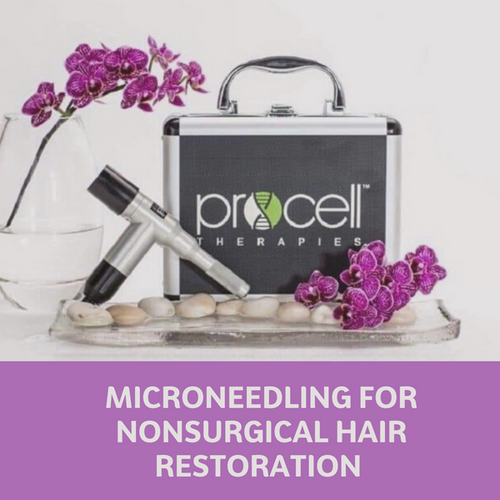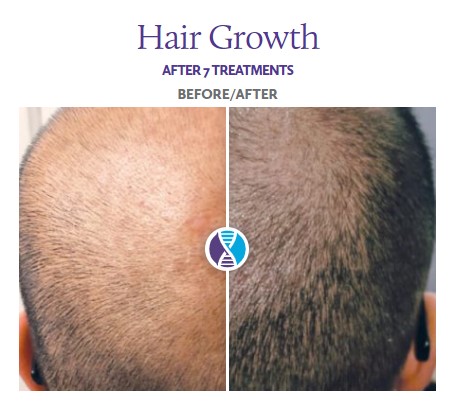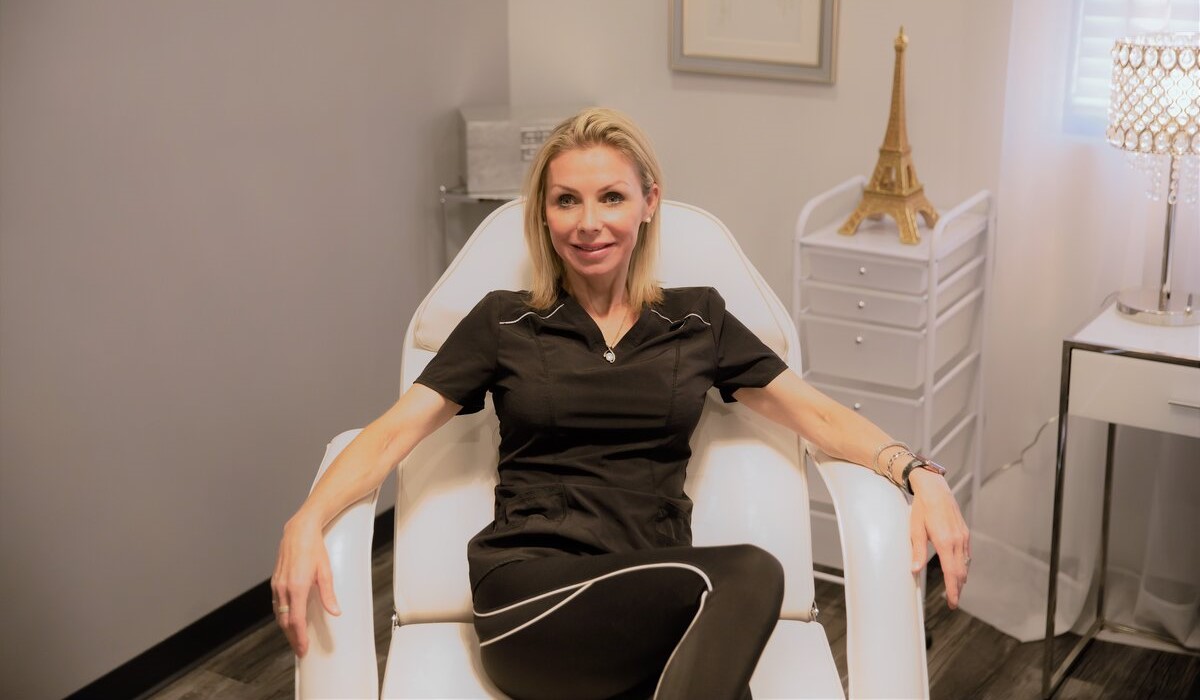 Hair loss is an experience that’s familiar to many people, particularly aging adults. Close to 80% of adult men will have a run-in with hair loss, at some point in their lifetime. In fact, by the age of just 50, almost half of all men will see signs of hair loss. The same can also be said for approximately 40% of women, of that same age.
Hair loss is an experience that’s familiar to many people, particularly aging adults. Close to 80% of adult men will have a run-in with hair loss, at some point in their lifetime. In fact, by the age of just 50, almost half of all men will see signs of hair loss. The same can also be said for approximately 40% of women, of that same age.
No matter your age, if you’re beginning to see hair loss, know that your current situation isn’t hopeless — as distressing or unsettling as it may feel. Many people form a unique sort of attachment to their hair, so loss of hair can almost feel like a small loss of identity. However, at the end of the day, it’s important to remember that potential solutions or treatments are out there.
One of these hair loss restoration treatments is called stem cell microneedling, or stem cell therapy. This is a popular treatment for those experiencing hair loss, including those with androgenic alopecia.
Why Might Someone Want to Receive a Stem Cell Microneedling Treatment?
Stem cell microneedling is a versatile treatment and is used for more than simply hair loss. In some instances, microneedling is used as a cosmetic facial treatment, in order to trigger the natural healing process of the skin. Microneedling is a fantastic option for tightening the skin, healing scars, and creating collagen.
Regarding hair restoration, however, hair loss can be quite a traumatic experience in some instances. Often, people don’t simply want to sit back and allow their hair to fall out. Intervention is often possible and is a route that’s frequently taken. Stem cell microneedling is an accessible, effective option when it comes to the hair regrowth process.
Furthermore, a number of people appreciate the fact that stem cell microneedling is a non-surgical process. This is favorable for a number of reasons, including the lack of a recovery time, as would be the case following a surgical procedure. After receiving a stem cell microneedling treatment, you’re free to return to your life, without being temporarily sequestered to your bed, or other recovery concerns.
If you’re currently experiencing hair loss, then consider microneedling of the scalp as a viable option.
The Basics of Microneedling for Nonsurgical Hair Restoration (And the Science Behind It)
 So, what exactly does stem cell microneedling treatment do to promote hair growth?
So, what exactly does stem cell microneedling treatment do to promote hair growth?
There are a few factors involved in the process:
1. Microneedling Helps Increase Collagen Production
The tiny needles used during a microneedling procedure, whether on the face or on the scalp, are able to stimulate collagen production. But how does this benefit your scalp? How does it promote hair growth?
It’s important to note that nearly 80% of your skin is made up of collagen. As such, collagen is a vital component of strong, structurally sound skin. However, as we age, our collagen begins to decline. This process can begin as early as the mid-20s.
Collagen in your scalp provides the scaffolding for hair follicles. This allows follicles to remain healthy, allowing them to continue growing hair. When your scalp is suffering from a lack of collagen, you’re likely to see a slowing in hair growth — in extreme cases, your follicles may become dormant altogether.
2. Microneedling Treatment Increases Blood Flow to Your Scalp
As many of us already know, blood flow is crucial to the overall health of our bodies. This includes hair follicles. When you have increased blood flow to the scalp, the area is being supplied with a greater amount of nutrients and oxygen. In this way, the hair follicles are receiving all the necessary supplies to grow healthy, strong hair.
When you undergo a microneedling treatment for hair restoration, blood is immediately encouraged to surge to the scalp. This is because the needles involved in the treatment are opening blood vessels in the scalp, leading to blood rushing to the micro punctures.
3. The Treatment Stimulates Stem Cells
Perhaps unsurprisingly, stem cell microneedling is fantastic for stimulating stem cells in your scalp. When the scalp receives a microneedling treatment, stem cells found deep inside your hair follicles are stimulated. Thus, these stimulated stem cells trigger growth factor production within the area. This provides yet another boost to healthy hair growth.
4. Microneedling Improves Absorption of Serums and Topical Medications
Maybe you’re already on a medicated hair regrowth regime, applying topical medications such as Finasteride or Minoxidil. If this is the case, following your stem cell microneedling session, you can expect improved penetration of these medications. Hair follicles can be found around 1-2 millimeters beneath the surface of the scalp. When these follicles are opened up, thanks to micro punctures, medication will have easier, more direct access to the follicles.
Can Stem Cell Therapy Regrow Hair?
The simple answer is that it certainly seems to be the case, based on current studies and results seen following treatment. All in all, not many existing studies have tested the benefits of stem cell microneedling as a hair loss treatment. That’s to say, there’s still a lot for us to figure out in the future. Following additional testing, we may also be able to learn which topical ingredients are most effective, when combined with stem cell microneedling treatment.
Nonetheless, the studies that have been done look highly promising. Plus, in many cases, the results speak for themselves. A notable study involved a total of 100 male participants. All of these participants dealt with hair loss due to androgenetic alopecia (AGA), otherwise known as male pattern baldness. Some individuals in the study were instructed to apply 5% Minoxidil twice a day, while the others were instructed to receive a microneedling session every week, in addition to the same Minoxidil routine.
Each dose of Minoxidil was carefully measured, being 1mL in size, every application session. So, each participant would work through a total of 2mL of Minoxidil every day, whether or not they were receiving microneedling sessions. The only exception was that, in the case of the microneedling participants, they were instructed not to apply minoxidil on the days when they received treatment. However, 24 hours after each procedure, they would resume application as typical.
At the end of the study’s twelve weeks, the group who received microneedling displayed far greater improvement in hair regrowth. This wasn’t just a minor difference in growth, either, between the two groups of participants — it was a significantly greater increase in hair growth among those who received microneedling treatments.
Over time, stem cell microneedling has been gaining evidence to show its effectiveness. The treatment is highly promising, and it’s only becoming more so, as time passes and our understanding grows.
Hair Restoration Using Procell Pure Stem Cells: What Are the Advantages?

What is Procell? And how does it work, when used as a part of your stem cell microneedling treatment for hair restoration? Procell pure stem cells are packed full of growth factors. So, they can do more to help encourage hair regrowth than undergoing a standard microneedling treatment.
These growth factors include:
- Cytokines
- TGF-β3
- Protective antioxidants
- Potent peptides
Procell makes use of conditioned media, sourced from stem cells in human bone marrow culture. Specifically, these cells are known as BM-MSCs. These cells play a vital role in the body’s healing processes, throughout our lives. However, as we age, our production of BM-MSCs begins to decrease. The BM-MSCs found in Procell are sourced from young, healthy volunteers, who undergo heavy medical moderation, during the process. These stem cells are then kept in FDA-regulated facilities, where they can grow and be processed.
Essentially, the use of Procell pure stem cells ensures an even more powerful effect on hair growth, thanks to the additional growth factors.
What to Expect During Your Procell Microneedling Treatment
During your stem cell microneedling session, your scalp will come into direct contact with needles, which are attached to a roller. These needles are very small and very fine. The roller is worked along the scalp, right at the site of the hair loss. The needles will then create tiny injuries to the scalp area.
Prior to the treatment, expect your provider to apply a topical anesthetic, directly onto your scalp. This is done to help reduce any pain, given the nature of the treatment. Depending on how large the treatment area is, the length of the treatment can vary. Still, stem cell microneedling is generally a fast treatment — in most cases, it will take less than ten to fifteen minutes. After that, you’re done! It’s as simple and easy as that.
Following your stem cell microneedling treatment, you might see some bruising, redness, or swelling on the affected area of the scalp. There may also be a small amount of pain, following the procedure. However, most side effects of a microneedling procedure will fade within around five days of the treatment. Microneedling is a non-invasive procedure, so there’s no need to pause your daily life in order to recover.
Top 3 Advantages of Hair Restoration Using Stem Cell Microneedling

As a non-surgical treatment option for hair loss, stem cell microneedling comes with a variety of advantages over surgical hair restoration treatments.
These include:
1. Many Different People Can Benefit From Microneedling
Non-Surgical hair restoration options, such as stem cell microneedling, are suitable for a variety of people and hair loss situations. Both men and women can make use of microneedling treatment. In addition, stem cell microneedling doesn’t require a certain amount of hair loss to be effective. The procedure can be performed on both mild and more substantial hair loss — individuals in either of these groups have the potential to see benefits following their treatment.
2. Faster Results
There will likely be a quicker outcome, compared to surgical hair restoration options. When you opt for a more invasive surgical procedure for hair loss, it may be a while before you’re able to see significant results. Plus, procedures such as stem cell microneedling typically charge a lower upfront fee, compared to surgical procedures. This means less financial stress, and less time spent saving money to receive surgery or a hair transplant.
3. Less Pain, Discomfort, and Recovery
Far less pain and healing time are required, in cases of non-surgical hair restoration procedures. It’s a well-known fact that surgery and invasive procedures are painful, and they require an amount of time spent in recovery. Recovery from surgery can be highly disruptive to a person’s daily life, and the issues with pain don’t make the situation any more manageable. While stem cell microneedling does feature a limited amount of pain (we are dealing with needles, after all), it’s minor and highly temporary. You won’t even need to spend time in recovery or deal with lingering discomfort for more than a few days.
Stem Cell Hair Regrowth Results: What to Expect
Like any hair restoration treatment, different people will see different outcomes. In some cases, the stem cell microneedling treatment will be more effective than in others.
Also, as with any treatment of this nature, you probably won’t know how your body responds until you’ve tried it yourself. Still, when it comes to procedures with as much promise as stem cell microneedling, your chances of a positive outcome are favorable.

How Many Stem Cell Treatments Do I Need?
Note that most stem cell therapy requires 3 treatments 4–6 weeks apart when first starting out. However, the actual number of treatments needed varies per patient.
The Cost of Stem Cell Microneedling Treatment
Compared to surgical hair restoration options, stem cell microneedling is truly a bargain. For instance, if you’ve ever considered a hair transplant, you may have been disheartened during your research. After all, while this surgical procedure is popular and effective, it comes at a very high price. Depending on where you receive your hair transplant, you can expect to pay several thousand dollars. In some cases, you could expect to pay as much as $10,000 — and there are even $20,000 options out there.
For some people suffering from hair loss, whether minor or severe, the high cost of a surgical hair transplant may not be worth it. Maybe you’re bothered by your hair loss, but not to the extent that you’re willing to pay a large sum of money to correct the issue. Or maybe the cost is simply outside your budget, whether or not you’d be willing to hand over the money.
This is a fantastic reason to consider a more affordable (but still effective) procedure, such as Procell pure stem cell microneedling. Microneedling procedures, in general, cost only a small fraction of what you’d pay for a surgical hair restoration procedure.
At French Radiance Esthetics, you’ll pay just $455 for a Procell pure stem cell treatment. Considering the incredible results people often see, this is a true steal. Plus, you won’t have to deal with the hassle and aftercare of a highly invasive surgical procedure, such as a hair transplant. It’s a wonderful option, no matter the severity of your hair loss.
Schedule an Appointment With a Microneedling Professional at French Radiance Esthetics

If you’re considering undergoing a microneedling procedure, whether for hair loss or simply for rejuvenation of the skin, consider French Radiance Esthetics. We make sure to carry the highest quality skincare products, which we’ll apply to your skin during the microneedling process — after all, this is when your skin will be the most receptive!
Contact us to schedule an appointment, or call us at (623) 232-8228.